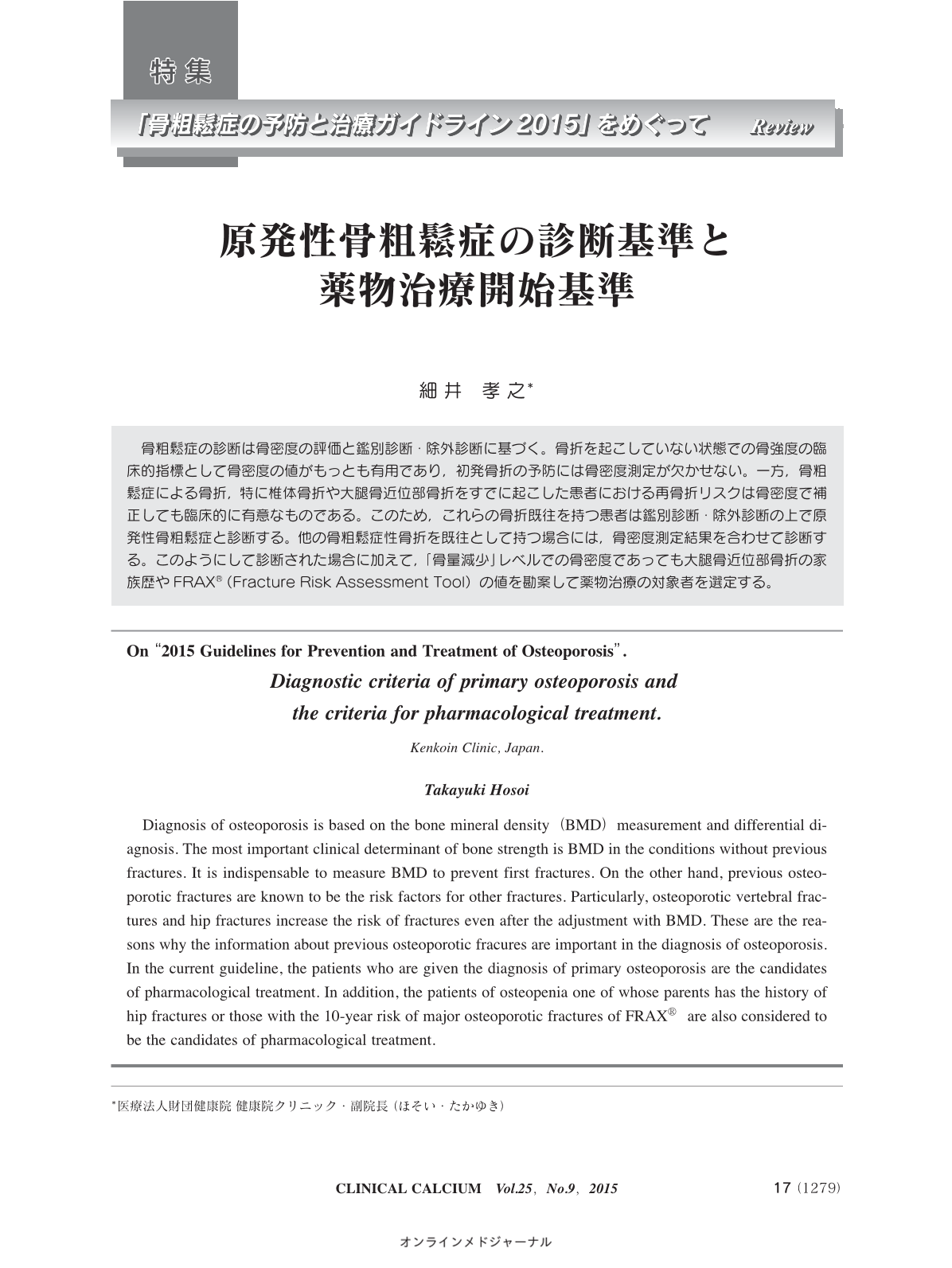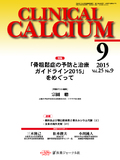Japanese
English
- 有料閲覧
- Abstract 文献概要
- 1ページ目 Look Inside
- 参考文献 Reference
骨粗鬆症の診断は骨密度の評価と鑑別診断・除外診断に基づく。骨折を起こしていない状態での骨強度の臨床的指標として骨密度の値がもっとも有用であり,初発骨折の予防には骨密度測定が欠かせない。一方,骨粗鬆症による骨折,特に椎体骨折や大腿骨近位部骨折をすでに起こした患者における再骨折リスクは骨密度で補正しても臨床的に有意なものである。このため,これらの骨折既往を持つ患者は鑑別診断・除外診断の上で原発性骨粗鬆症と診断する。他の骨粗鬆症性骨折を既往として持つ場合には,骨密度測定結果を合わせて診断する。このようにして診断された場合に加えて,「骨量減少」レベルでの骨密度であっても大腿骨近位部骨折の家族歴やFRAX®(Fracture Risk Assessment Tool)の値を勘案して薬物治療の対象者を選定する。
Diagnosis of osteoporosis is based on the bone mineral density(BMD)measurement and differential diagnosis. The most important clinical determinant of bone strength is BMD in the conditions without previous fractures. It is indispensable to measure BMD to prevent first fractures. On the other hand, previous osteoporotic fractures are known to be the risk factors for other fractures. Particularly, osteoporotic vertebral fractures and hip fractures increase the risk of fractures even after the adjustment with BMD. These are the reasons why the information about previous osteoporotic fracures are important in the diagnosis of osteoporosis. In the current guideline, the patients who are given the diagnosis of primary osteoporosis are the candidates of pharmacological treatment. In addition, the patients of osteopenia one of whose parents has the history of hip fractures or those with the 10-year risk of major osteoporotic fractures of FRAX®are also considered to be the candidates of pharmacological treatment.



